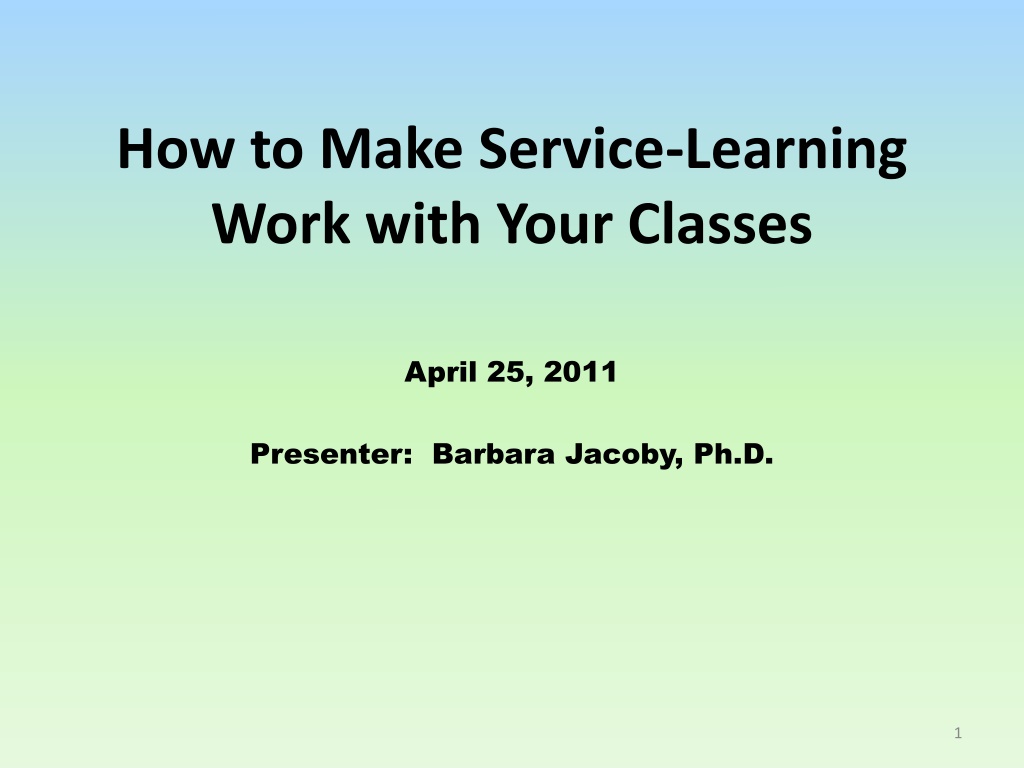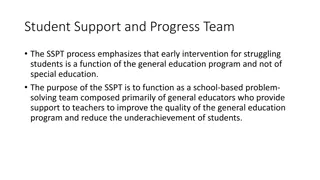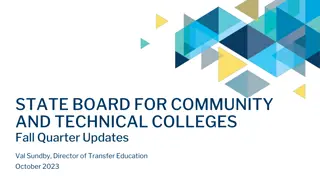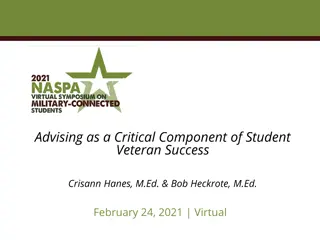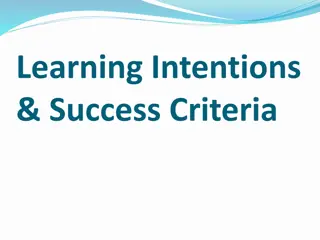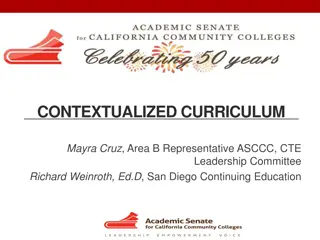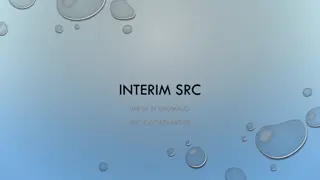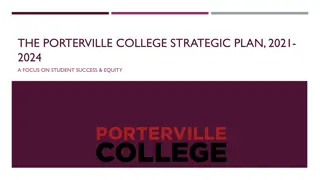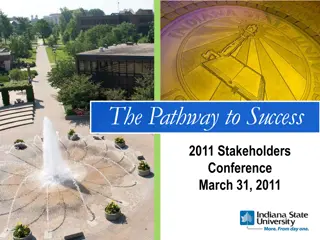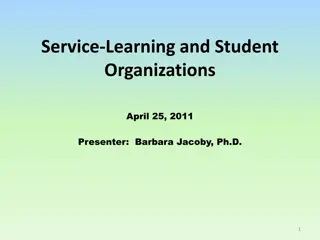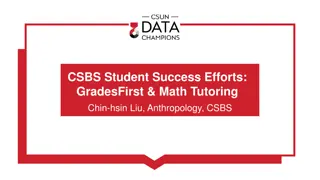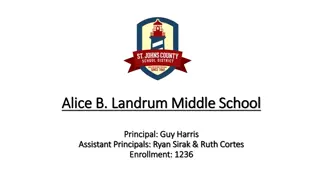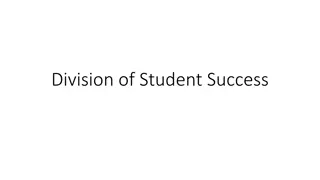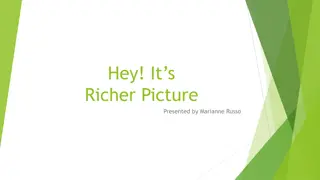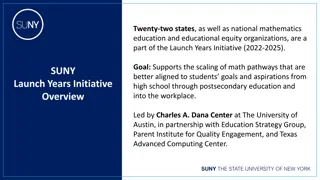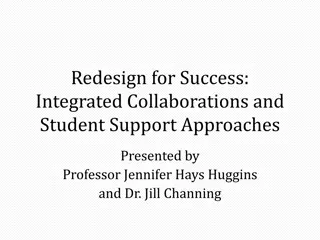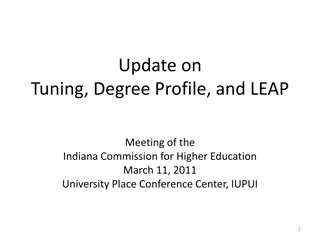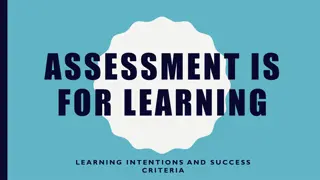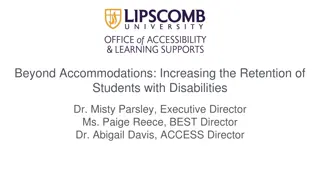Enhancing Student Success through Service-Learning Initiatives
Explore how service-learning can positively impact student success by integrating real-world experiences into educational settings, promoting student engagement, fostering critical thinking skills, and empowering students to be part of the solution to societal challenges. This presentation discusses models of service-learning, principles of reflection and reciprocity, supporting mechanisms, and the importance of learning outcomes assessment.
Download Presentation

Please find below an Image/Link to download the presentation.
The content on the website is provided AS IS for your information and personal use only. It may not be sold, licensed, or shared on other websites without obtaining consent from the author. Download presentation by click this link. If you encounter any issues during the download, it is possible that the publisher has removed the file from their server.
E N D
Presentation Transcript
How to Make Service-Learning Work with Your Classes April 25, 2011 Presenter: Barbara Jacoby, Ph.D. 1
Overview of Agenda Service-learning and student success Models of service-learning in the curriculum Fundamental principles of reflection and reciprocity What it takes to support service-learning Resources 2
Setting the Context: Service-Learning at the Intersection A. Reaffirming the public purpose of higher education B. Student engagement in learning C. Learning outcomes and assessment 3
A. Reaffirming the Public Purpose of Higher Education Social problems are growing locally and globally Higher education particularly research universities are being called on to respond 4
Center for Information and Research on Civic Engagement (CIRCLE) www.civicyouth.org Campus Compact www.compact.org 5
B. Student Engagement in Learning High Impact Practices First-year seminars Learning communities Collaborative assignments Diversity/global learning Service-Learning Undergraduate research Capstone courses 6
Service-Learning and Retention Direct relationship to success and graduation S-L students are more likely to re-enroll, interact with faculty, and study S-L provides sense of purpose S-L enables students to retain course content, develop the habit of critical thinking, and seek to be part of the solution to social problems 7
C. Learning Outcomes and Assessment Learning outcomes : State what a student is expected to know or be able to do Are expressed in terms of knowledge, skills, or attitudes 8
The focus of student assessment has shifted from an emphasis on inputs to an emphasis on outputs. 9
In service-learning, outcomes are established and assessed for students and communities. Intentions are not enough; results are what matters. 10
What Service-Learning Is (and Is Not) A. What is unique about service-learning B. Basic principles of service-learning 1. Reflection 2. Reciprocity C. Models of service-learning in the curriculum 11
Service-Learning: A Balanced Approach (A. Furco, 1996) Recipient BENEFICIARY Provider Service FOCUS Learning SERVICE-LEARNING COMMUNITY SERVICE VOLUNTEERISM FIELD EDUCATION INTERNSHIP 12
Definition of Service-Learning Service-learning is a form of experiential education in which students engage in activities that address human and community needs together with structured opportunities for reflection designed to achieve desired learning outcomes. B. Jacoby, Service-Learning in Higher Education, 1996 13
Key Principles of Service-Learning Reflection Reciprocity 14
Service-Learning Models 1. Course where service-learning is optional 2. Service-learning/fourth-credit option 3. Service-learning course 4. First-year experience 15
Service-Learning Models 5. Service-learning internship or independent study 6. Field work service-learning 7. Community-based research 8. Service-learning capstone 16
Service-Learning Models 9. International service-learning 10. Course sequencing 11. Engaged department or program 12. Engaged university 17
Reflection is the hyphen: Service-Learning 18
Critical reflection is the powerful process of making meaning out of a purposeful combination of experiences and academic content. 19
4 Cs of Critical Reflection Continuous Connected Challenging Contextualized 20
4 Cs of Critical Reflection Continuous: Before During After the service experience 21
4 Cs of Critical Reflection Connected: Builds bridges among: Content learning Personal reflections First-hand experiences 22
4 Cs of Critical Reflection Challenging: Poses old questions in new ways Reveals new perspectives Raises new questions IMPORTANT: Create a balance of challenge & support. 23
4 Cs of Critical Reflection Contextualized: Form and process guided by context Can occur in class or at service site May involve community members Consider critical incidents 24
Reflection is critical when: It is designed to generate learning by applying theory to practice, examining causality, raising questions It deepens learning by challenging simplistic conclusions, comparing perspectives, asking why iteratively It documents learning by producing evidence of learning for assessment. 25
Your Reflection What comes to mind for you when you think about a missed opportunity for deep learning that has occurred in the context of your own courses or other work with students? 26
Modes of Reflection Telling Writing Activities Multimedia 27
Example: Psychology of Domestic Violence Learning outcomes: Demonstrate understanding of the dynamics and effects of domestic violence. Demonstrate understanding of various approaches and their effectiveness. Analyze the effects of gender, culture, race/ethnicity, and SES on victims. 28
Example: Psychology of Domestic Violence Weekly service analysis papers 2 pages include multiple references maximum 1 paragraph on what occurred critical reflection on how service experience relates to readings --O Brien, K. M., PSYC 319D, University of Maryland, 2010 29
Example: Psychology of Domestic Violence Service analysis paper topics: What did I learn about working with women or children in crisis this week? How successfully does the agency address the issues victims face? How does culture/race/SES influence my service work? 30
Grading Service Analysis Papers 4 points = Exceptional, thoughtful critique that truly integrated course concepts & research into an analysis of the experience 3 points = Very good, thoughtful critique that applies course concepts & research 31
Grading Service Analysis Papers 2 points = Average to below average analysis, does not thoroughly integrate course concepts & research 1 point = Completed the assignment, but did not provide a thoughtful analysis --O Brien, K. M., PSYC 319D, University of Maryland, 2010 32
3 Cs of Community Partnerships 1. Communication 2. Commitment 3. Compatibility R. Stoecker & E. Tryon, The Unheard Voices, 2009 33
3 Cs of Community Partnerships Communication: It s the most important element. Can t be taken for granted. Can t be done only through email. Find a common language. 34
3 Cs of Community Partnerships Commitment: Commitment is serious. Length of commitment is critical. Short-term projects may not be worth it. 35
3 Cs of Community Partnerships Compatibility Learning outcomes Schedules and hours Tasks Service-learning cannot be just about the students. 36
Faculty Support for Service-Learning Faculty development Faculty support Faculty recognition 37
Service-Learning Offices and Centers Provide faculty development and support Serve as liaison with the community Coordinate logistical issues Offer a continuum of co-curricular activities 38
Resources Campus Compact CAS www.servicelearning.org Online providers (e.g., Magna, Academic Impressions) 39
Thank you! bjacoby@umd.edu 40
